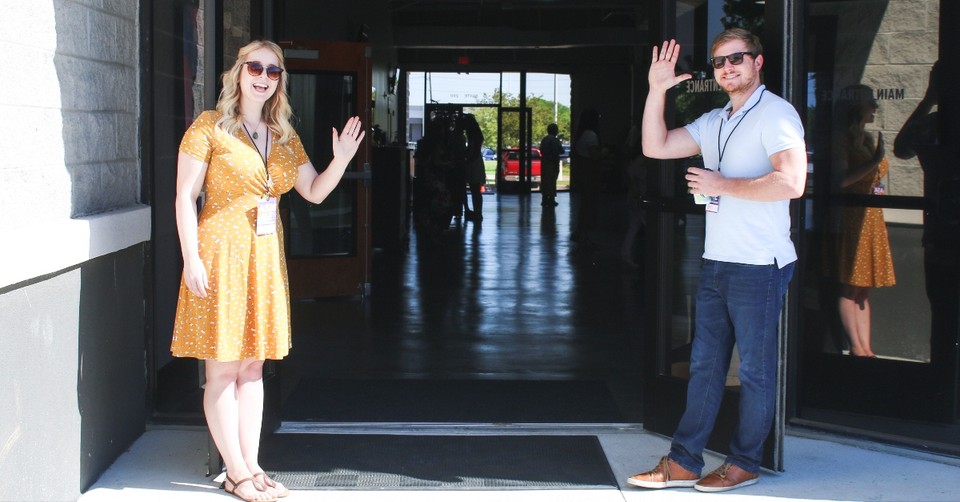How Can Churches Turn “Creasters” into Regular Members?

They have been labeled — “creasters,” and they are those who attend church twice a year, on Easter and Christmas Sunday. This term, perhaps somewhat unfamiliar, is used with some derision by certain church leaders and attenders.
There are those who view these particular church attenders as curious spectators who only visit church services on these special religious holidays. They look at the crowded parking lot, the congested foyer, and cramped seating as potential problems to overcome, instead of great occasions to reach out into the community.
Visionary pastors and committed Christ-followers, however, tend to look at these two important holidays as crucial outreach opportunities for the church. The motivation in people’s hearts to attend church services those days provides a rare open door for churches to share the life-changing message of the gospel with interested people who visit church functions those two weekends.
Easter and Christmas are the two times each year when people feel as if they ought to go to church. Perhaps they have feelings of curiosity or conviction, or maybe it’s because both of these holidays have roots in the life of Christ Himself. Obviously, Christmas is a time for people to celebrate the Lord’s birth, while Easter is the holiday where people remember Christ’s resurrection.
Despite contemporary culture’s attempt to eradicate Christianity, there is still an inherent remnant of the influence of Jesus Christ in people’s hearts and minds. That’s why Easter and Christmas are ideal times for churches to creatively and confidently share the gospel — and to make intentional connections with the visitors that attend church on those occasions.
Here are five practical suggestions for churches to consider that will help turn “creasters” into regular church members and participants.
1. Churches Should Always Be Visitor Friendly
Easter and Christmas Sunday should never be “business as usual” for local churches. Those two days present unique opportunities for churches to actively and visibly share the love of Jesus due to the number of visitors that will probably attend their services.
However, regular church members and attenders will probably need to be prepared ahead of time for a potentially larger audience. Attitudes of frustration or annoyance toward the visitors must never be communicated or displayed by church members. Church leaders should train members well ahead of time so that they are ready to actively welcome the guests that may attend church on those two Sundays.
Church members should be prepared to leave the best parking places and seats in the auditorium for the visitors. Hosts and hostesses should also be trained to be welcoming and friendly to the newcomers.
Plus, churches should think about their signage system as well, so that those who do not regularly attend know how to find their way around the church parking lot and church building. Churches should not assume that it will be a simple process for new attenders.
2. Work to Make Visitors Feel Welcome
It is very important for churches to be intentional about making visitors feel welcome. As was mentioned above, perhaps a welcoming committee of hosts and hostesses could be utilized effectively on those days especially.
In fact, the act of welcoming guests should begin in the church parking lot, where the option of valet parking may help. The church should then position a team of friendly and outgoing people (be sure to recruit people of all ages — from teenagers through older adults) at each entrance to the church building.
The hosts and hostesses should be prepared to show guests where key locations are in the church building, like the church nursery, the restrooms, and the best way to find good places to sit in the church auditorium.
The members of the welcoming committee should remember that not everyone is an extrovert with the aptitude to carry on lengthy conversations with strangers. Team members should be trained to be sensitive and friendly to people of all ages and all personality types.
Current research indicates that it’s not best for churches to put guests on the spot by asking them to stand or to raise their hands to be recognized as visitors, nor is it a good idea to host a “contrived greeting time” for everyone to greet people around them.
3. Be Sure the Gospel Is Presented Confidently and Creatively
The most important priority on both holidays is to make sure that the gospel is preached with clarity and conviction. People today are looking for answers to life’s tough questions and they are searching for hope. The gospel is the “good news” that Jesus died on the cross for the sins of all humanity and that He rose again (1 Corinthians 15:1-4).
If churches want people to stay connected to the church after they visit for these occasions, it’s important that they know that it preaches and teaches the truth of God’s Word. Contemporary culture is not looking for more of man’s opinion. People are looking for something that works and that applies to their lives today (2 Timothy 3:16-17; Hebrews 4:12; James 1:22).
4. Help Guests Make Future Connections with the Church
Churches should be intentional about developing a plan to help their one-time guests sense the importance of making a long-term connection to that church. Even visitors understand that it is no secret that churches would like new attenders to become fully functioning members of the church. That’s why churches should take the opportunity on both Easter and Christmas Sunday to clearly communicate with their guests how they can become more connected with that church.
This could take the form of PowerPoint slides or it could be announced from the pastor or another person verbally from the front. It is especially important to let the guests know the web address or URL of the church’s website so that they can look up the information they are looking for then or at some other time.
However, it’s also important for churches to distribute something on those special days for the visitors to take home with them. Some churches give each visitor a gift from the church. Other churches hand out a brochure that features information about how to join the church and what other ministries and functions the church has to offer.
Still, other churches make sure to give each person a book, booklet, or other pieces of printed literature that clearly present the gospel and that gives people the contact information they would need to get in touch with someone from the church at a later date.
5. Follow Up with Those Who Attend Services on Just Those Holidays
After considering the other practical suggestions that are listed here, pastors and church leaders should make it a priority to collect contact information from each visitor for the purpose of staying in touch with them.
Of course, churches must be very careful to not embarrass people, or harass them into providing this information. Some churches are utilizing cell phones and tablets to collect people’s names, email addresses, or other information online for potential future contact.
Church leaders should think through how best to communicate with these guests and then formulate a plan to collect the information they need. Some churches may be hesitant to gather this kind of information, but it’s important to remember that the church is providing an important service for its community — and that the overarching motive is for people to come to Christ and to on living for Him.
What Does This Mean?
Churches can help “creasters” move from attending church services once or twice a year to faithful, serving church members. Perhaps they visited a church on Easter or Christmas because of their curiosity or because God was at work in their hearts.
However, if church leaders and members alike are friendly and welcoming, as well as diligent and creative, it is possible to minister to these guests so that they move to lasting involvement in the church.
©Unsplash/krispaparo


Originally published April 07, 2020.





